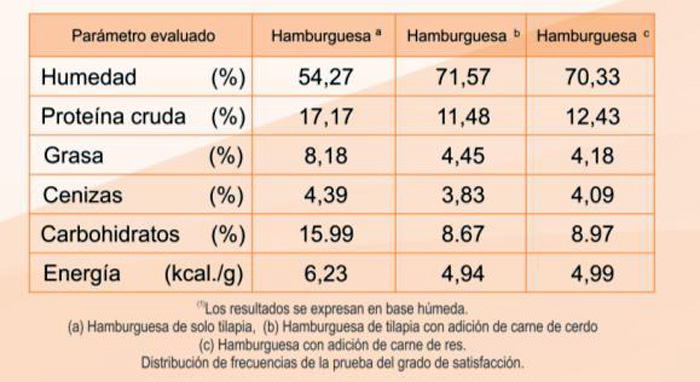According to the Food and Agriculture Organization (FAO), Colombia counts on a large number of watersheds, a situation that makes it an important place in terms of water resources in the world: the place with the biggest diversity of fish and hydro biological organisms in the planet. The famous red tilapia (Oreochromis sp.) is part of the list of highly grown fish in Colombia.
During the last years, Colombia has experienced an important increase in the production of this fish due to its excellent nutritional and organoleptic qualities (taste and smell), mention the experts.
With the purpose of contributing to the development of the fish sector in order to generate new transformation and commercialization activities for this product, Professor José Igor Hleap and the student Luisa Fernanda Ossa developed a hamburger made of tilapia and then assessed its nutritional and organoleptic properties compared to those made of cow and pork.
"We elaborated three types of hamburgers: the first just with tilapia fillet, the second with an additional component of cow meat, and the third with additional pork, elaborating a fresh, non-processed raw product, a hamburger made of red tilapia, according to the traditional technological manufacturing processes" asserted Professor Hleap.
The production of these hamburgers was carried out in the Laboratory of Meat Technologies of Universidad Nacional de Colombia in Palmira, using a type of tilapia paste called surimi.
Subsequently, the researchers performed physicochemial analysis of nutritional value in order to determine the amount of nutritive information that the products had when changed into hamburgers.
"The results of this proximal analysis, and the amount of energy brute, allow to conclude that this hamburger made of tilapia had an energy intake of 6.23 Kcal/g, a higher value compared to that of the hamburgers made of tilapia with additional pork and cow meat components, which had an energy intake of 4.99 Kcal/g and 4.94 Kcal/g respectively" mentioned Luisa Fernanda Ossa.
Likewise, the nutritional results showed higher protein levels in tilapia hamburgers (17.17% of raw protein), compared to cow meat (11.48%) and pork (12.43%) hamburgers.
Finally, for measuring the consumer"s preference degree, satisfaction, and acceptance, the researchers performed a sensorial evaluation to the hamburgers through tasting to 100 non trained, random people in different part of the campus.
"The results showed a 75% acceptance for the sample with tilapia, 78% for the combination tilapia-cow meat, and 82% for the sample with pork addition. This allows concluding that the three formulas were completely satisfactory for the evaluating judges, since the differences are not statistically important" asserted Professor José Igor.
 Correo Electrónico
Correo Electrónico
 DNINFOA - SIA
DNINFOA - SIA
 Bibliotecas
Bibliotecas
 Convocatorias
Convocatorias
 Identidad UNAL
Identidad UNAL





